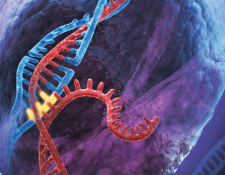Genotoxic Effects of Base and Prime Editing
By Kamal Nahas,
The Scientist
| 01. 12. 2024
New gene editing tools could become gamechangers for gene therapy, but scientists need to develop new approaches that curtail undesirable mutations. The clustered regularly interspaced short palindromic repeats (CRISPR)-Cas9 system is one such error-prone editing tool that scientists later modified to limit its mutational burden.1 However, it’s unclear how the adapted techniques, called base and prime editing, stack up against the original CRISPR-Cas9 system.2 Reporting in the journal Nature Biotechnology, researchers at the San Raffaele Scientific Institute revealed that base and prime editing produced more mutations than previously suggested but produced them less often than CRISPR-Cas9.3
CRISPR-Cas9 gene editing relies on a guide RNA that binds to a desired DNA sequence and a Cas9 enzyme that cuts both strands of DNA at that site, creating a double-strand break. Scientists edit the sequences at the cut ends before using different approaches to guide repair. However, there are often additional DNA sequences with blunt ends in the nucleus that could accidentally get jumbled with the cut ends during repair, leading to mutations. Therefore, researchers adapted CRISPR-Cas9 techniques...
Related Articles
Following a long-standing CGS tradition, we present a selection of our favorite Biopolitical Times posts of the past year.
In 2025, we published up to four posts every month, written by 12 authors (staff, consultants and allies), some in collaboration and one simply credited to CGS.
These titles are presented in chronological order, except for three In Memoriam notices, which follow. Many more posts that are worth your time can be found in the archive. Scroll down and “VIEW...
By Jonathan Matthews, GMWatch | 12.11.2025
In our first article in this series, we investigated the dark PR tactics that have accompanied Colossal Bioscience’s de-extinction disinformation campaign, in which transgenic cloned grey wolves have been showcased to the world as resurrected dire wolves – a...
By Jenny Lange, BioNews | 12.01.2025
A UK toddler with a rare genetic condition was the first person to receive a new gene therapy that appears to halt disease progression.
Oliver, now three years old, has Hunter syndrome, an inherited genetic disorder that leads to physical...
By Simar Bajaj, The New York Times | 11.27.2025
A common cold was enough to kill Cora Oakley.
Born in Morristown, N.J., with virtually no immune system, Cora was diagnosed with severe combined immunodeficiency, a rare genetic condition that leaves the body without key white blood cells.
It’s better...




